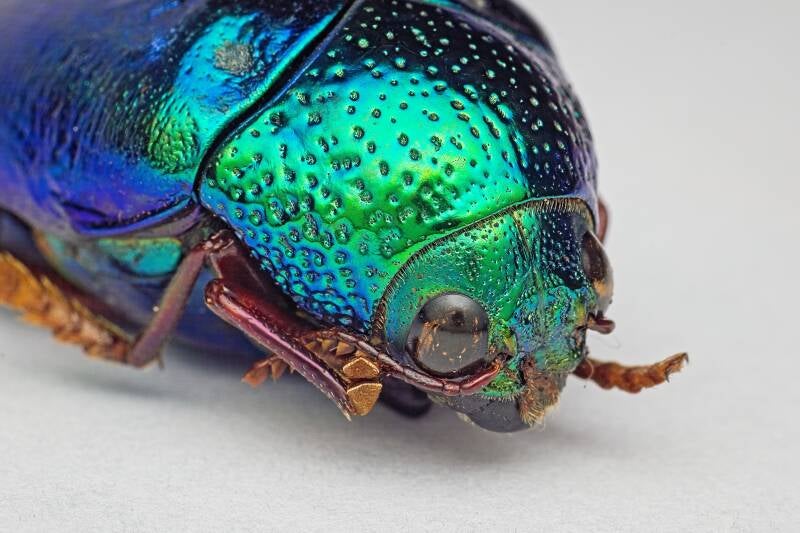Today I received my new flash diffuser, by Pope Shield. This is going to replace the lens diffuser I used up to now. It should give better quality diffusion and be more firm. Does it?
The Pope Shield flash diffuser, attached to the filter thread of my Canon RF 100 mm macro lens.
Up to now I used a rather simple flash diffuser that you shift on the lens. It works pretty good, and is very cheap at Amazon. It is a bit clumsy though as it does not fit very well, so you often need to support it between your fingers while taking the shot. But it also has some advantages. You can easily add and remove it, and it folds up into a handsome packages.
On YouTube I saw some positive review videos about a different diffuser from a company called Pope Shield. It seems like a one-person operation. So I decided to give it a try. The flash diffuser consists of a ring you screw into your filter thread. The actual diffuser then either is screwed onto the ring, or it magnetically clicks on the ring. I went for the non-magnetic one. I also took one that support the Raynox DCR-250 close-up lens, which simply clicks on the front of the diffuser ring. They have two types of diffuser material, for weak and for strong flashes. I bought a package consisting of both types. It cost about 45 euros.
The website warned that they had a big backlog and I read posts of people that had to wait very long for them to arrive. Also, the company does not really communicate about this. So I was wondering when I would receive it, and whether I would receive it at all. But today the packages was suddenly delivered. Exactly one month after I ordered it. Putting it together was easy (once you realize that the shiny side of the diffuser must face the flash, which is a bit counterintuitive.) And it works fine with the close-up lens. I only noticed that I can no longer use my lens cap with it. So you must be a bit careful. I used the diffuser for a weak flash because I use a small Godox V350 flash. When using the other diffuser you lose 1-2 stops of light and this caused problems when I was shooting insects that were a bit further away. I took some initial pictures with it. Here is one of them.
A beetle shot with the new diffuser. Look at the soft shadows on the white paper below it. Also notice that there are no strong highlights in the shinny body.
Here are some things I noticed after some experimentation:
- The diffuser works well. Somewhat better than my old one.
- Once is sits on my lens it is very convenient. Putting it on and taking it off is some work though. And it is more difficult to carry with you, as it does not fold up.
- The flash zoom has an influence on the light. When I set it to 24 mm, the whole diffuser lights up equally, also the sides and the bottom. But you loose some light this way. At the maximal zoom of 105 mm, the top of the diffuser lights up nicely, but the sides and bottom produce less light. So the light effectively becomes smaller, leading to slightly darker shadows. After some tests I decided that I best set the flash zoom to manual at 50 mm. That covers almost the entire diffuser and you lose little light. This depends on the length of your lens though. When the lens is smaller, the diffuser will be closer to the flash, and you need a wider flash zoom (smaller number) to cover it completely.
- It seems to need less flash light than my previous diffuser. 1/4 flash strength was often enough (using F/13 and ISO 200). This is good because it means the recharge time of the flash is smaller. This all obviously depends on the distance to the subject. I normally set the flash to TTL and use a +1 flash exposure compensation. That works well for most insects.
Final verdict: This Pope Shield flash diffuser definitely works better than the one I used before. So I will continue using it. A problem is that it is more work to take it off and you cannot fold it, so you need more space to take it with you. The magnetic one is a better choice if you do not want to use it all the time. Using it with the Raynox DCR-250 though is a bit more complicated. And it is a bit more expensive. Once I have used the new diffuser for a while in the field (when the insects return), I will do a further report about it.



Reactie plaatsen
Reacties